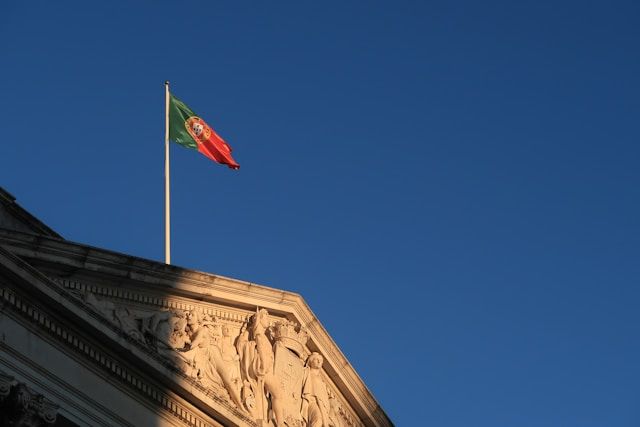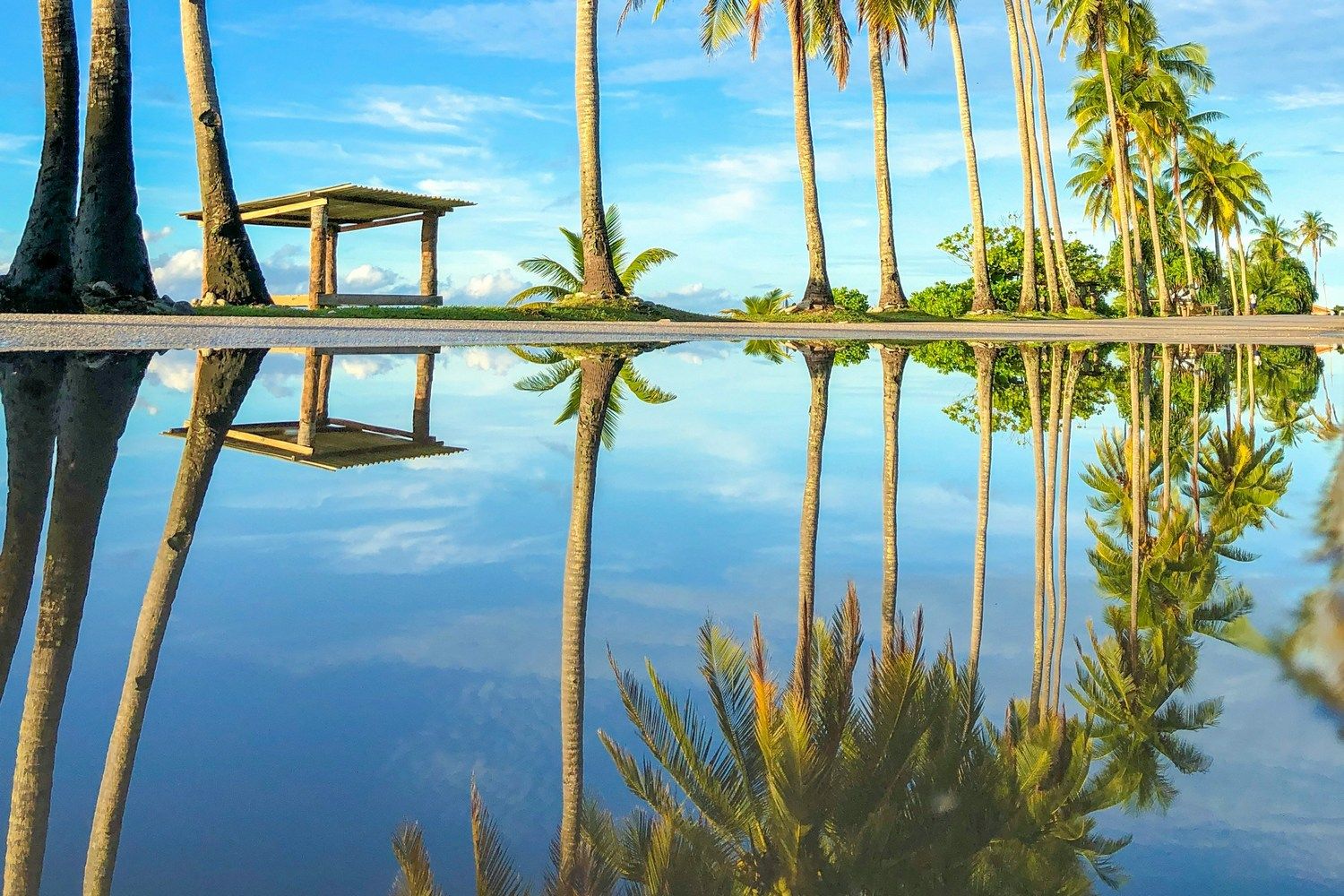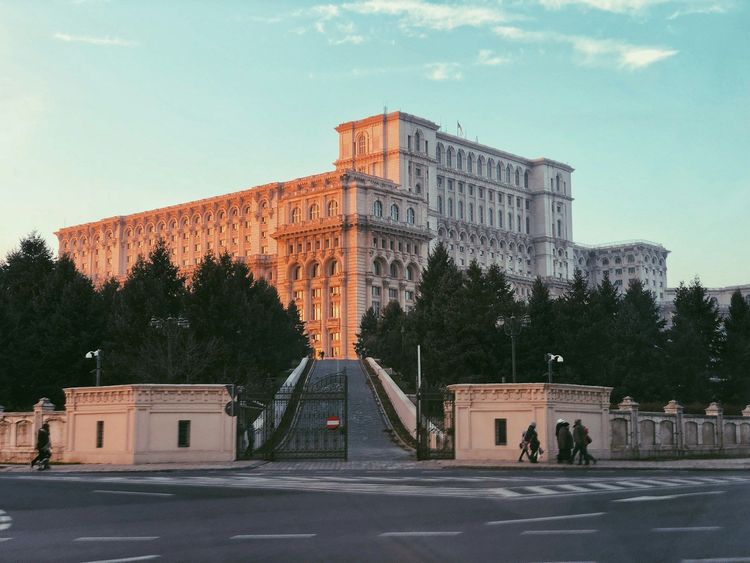The Republic of Nauru is the smallest island nation in the world, lost in the vastness of the Pacific Ocean. Despite its modest size, this country possesses unique geographical and climatic features, as well as faces serious environmental challenges. In this article, we will explore where Nauru is located, its climate, the natural resources found on the island, and the difficulties its inhabitants face.
Geographical Location
Nauru is a tiny island in Micronesia, located in the western part of the Pacific Ocean. Its closest neighbors are Kiribati (about 300 km to the east) and the Marshall Islands (about 800 km to the northeast).
The island lies just south of the equator, which determines its hot and humid climate. Nauru's coordinates are 0°32′ south latitude and 166°56′ east longitude. The country's area is only 21 km², making it the third smallest in the world after Vatican City and Monaco.
Nauru's terrain is unique: the central part of the island is a plateau where phosphate mining was once actively conducted. The coastline is surrounded by a narrow strip of fertile land where the majority of the population lives. Due to its remoteness from continents, Nauru has limited transportation links, which significantly impacts its economy and the lives of its residents.

Climate: Seasonality, Precipitation, Temperature
Nauru's climate is classified as equatorial, meaning high humidity and consistently hot weather year-round. There are no distinct seasons, but two main periods can be distinguished based on rainfall.
The rainy season lasts from November to February. During this time, the island experiences heavy downpours accompanied by high humidity. The dry season runs from March to October, when rainfall decreases but temperatures remain high.
The average annual temperature ranges between +26°C…+35°C, with nighttime temperatures rarely dropping below +25°C. Humidity levels reach 70–90%, creating a constant feeling of mugginess. Annual precipitation is about 2000 mm, but its distribution is uneven—most of it falls during the rainy season.
In recent decades, Nauru, like other island nations, has faced the consequences of global warming. Rising sea levels pose a serious threat to the country's low-lying territories.
Natural Resources and Ecology
The main natural wealth of Nauru for a long time was its phosphate deposits, formed from bird droppings (guano). In the 20th century, their active extraction brought significant income to the country, but by the early 2000s, the reserves were nearly exhausted. This led to severe environmental consequences—most of the island turned into uninhabitable wastelands with devastated landscapes.
The ecological situation in Nauru remains challenging. Deforestation caused by phosphate mining has led to the disappearance of much of the vegetation. Coastal waters suffer from pollution due to soil erosion and human activity.
A particular problem is the shortage of fresh water. There are no rivers on the island, and rainwater quickly evaporates or seeps into the porous ground. Currently, Nauru is trying to develop alternative economic sectors, including fishing and attracting foreign investment through its citizenship program, but the environmental consequences of phosphate mining continue to have a negative impact.
Climate-Related Challenges
Climatic conditions pose several serious challenges for Nauru. One of the most pressing issues is periodic droughts. The lack of fresh water forces authorities to use expensive desalination plants. Agriculture on the island is nearly impossible without artificial irrigation, making the country dependent on food imports.
An equally serious threat is rising sea levels. Since Nauru's maximum elevation is only 70 meters above sea level, even a slight increase in water levels could lead to the flooding of significant areas. This calls into question the very existence of the state in the long term.
Although Nauru is rarely directly affected by tropical cyclones, severe storms periodically damage infrastructure. Hurricane-force winds and high waves destroy coastal structures, requiring constant expenditures for repairs.

Historical and Demographic Overview
Nauru's history spans several centuries. Before European arrival, the island was inhabited by Micronesian tribes, whose culture and traditions have survived to this day. The colonial period began in the 19th century when Nauru was successively controlled by Germany, Britain, and Australia. The country gained independence in 1968, becoming one of the youngest and smallest republics in the world.
Nauru's population is about 10,000. The ethnic composition is predominantly indigenous Nauruans (58%), along with people from other Pacific islands (26%) and small communities of Europeans and Chinese. The official languages are Nauruan and English.
The country's modern economy is going through tough times. After the depletion of phosphate deposits, the main sources of income are fishing and the sale of fishing licenses. Nauru's citizenship program has also become a budget revenue stream. However, dependence on imports of nearly all goods, including food and fuel, makes the state vulnerable to external economic shocks.
Conclusion
The Republic of Nauru is a unique nation whose existence is shaped by a complex interplay of geographical, climatic, and economic factors. Nauru's climate creates constant challenges for its inhabitants, while environmental problems exacerbate an already difficult situation. Under these conditions, the country is forced to seek new paths for development, including attracting foreign investment. Nauru's future largely depends on how the international community addresses global warming and supports small island nations in the face of climate threats.
Nauru's Economic and Climate Resilience Program is an excellent way to obtain new citizenship with a wide range of opportunities. However, the essence of the program is not just about acquiring citizenship but also about providing the assistance this small island nation needs to overcome its challenges. The country's future depends not only on the successful achievement of its goals but also on their funding: investing in the program will make a crucial contribution to raising the funds Nauru needs to implement all its plans.





